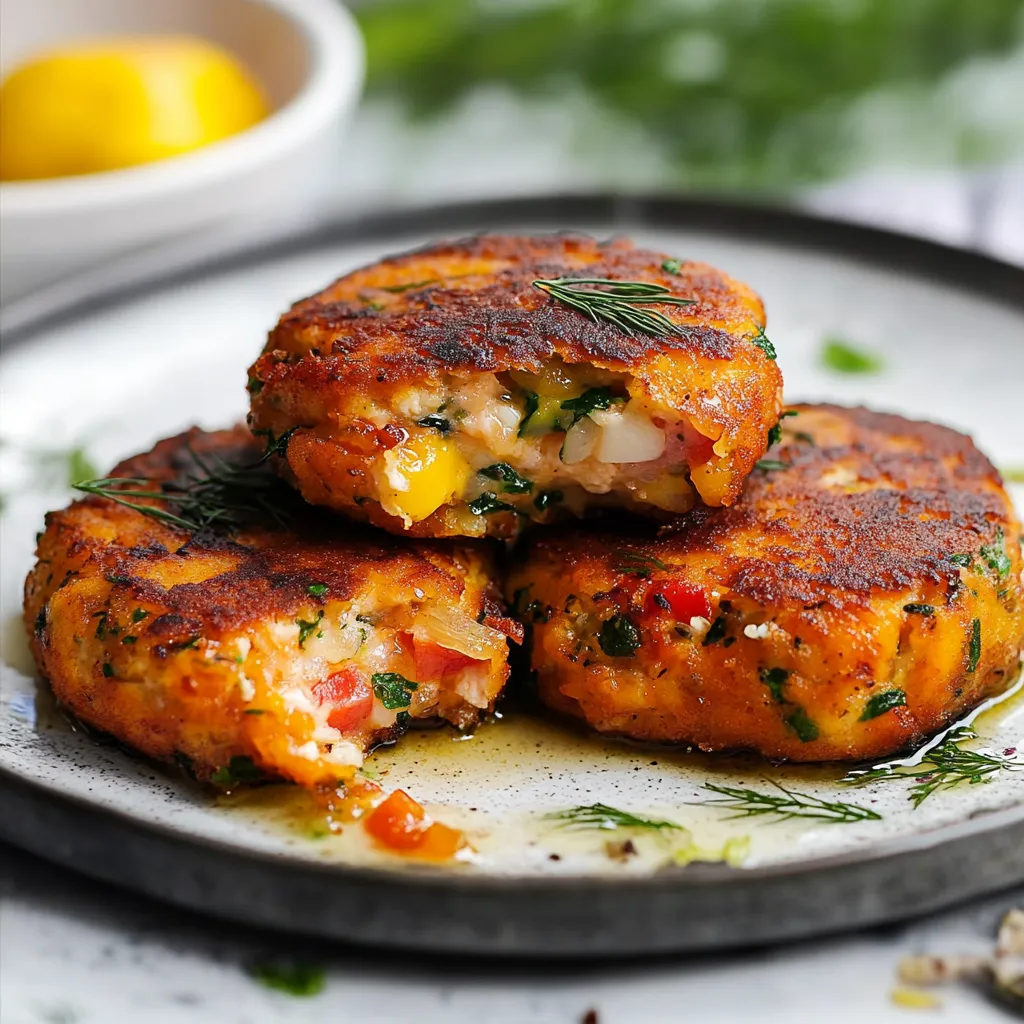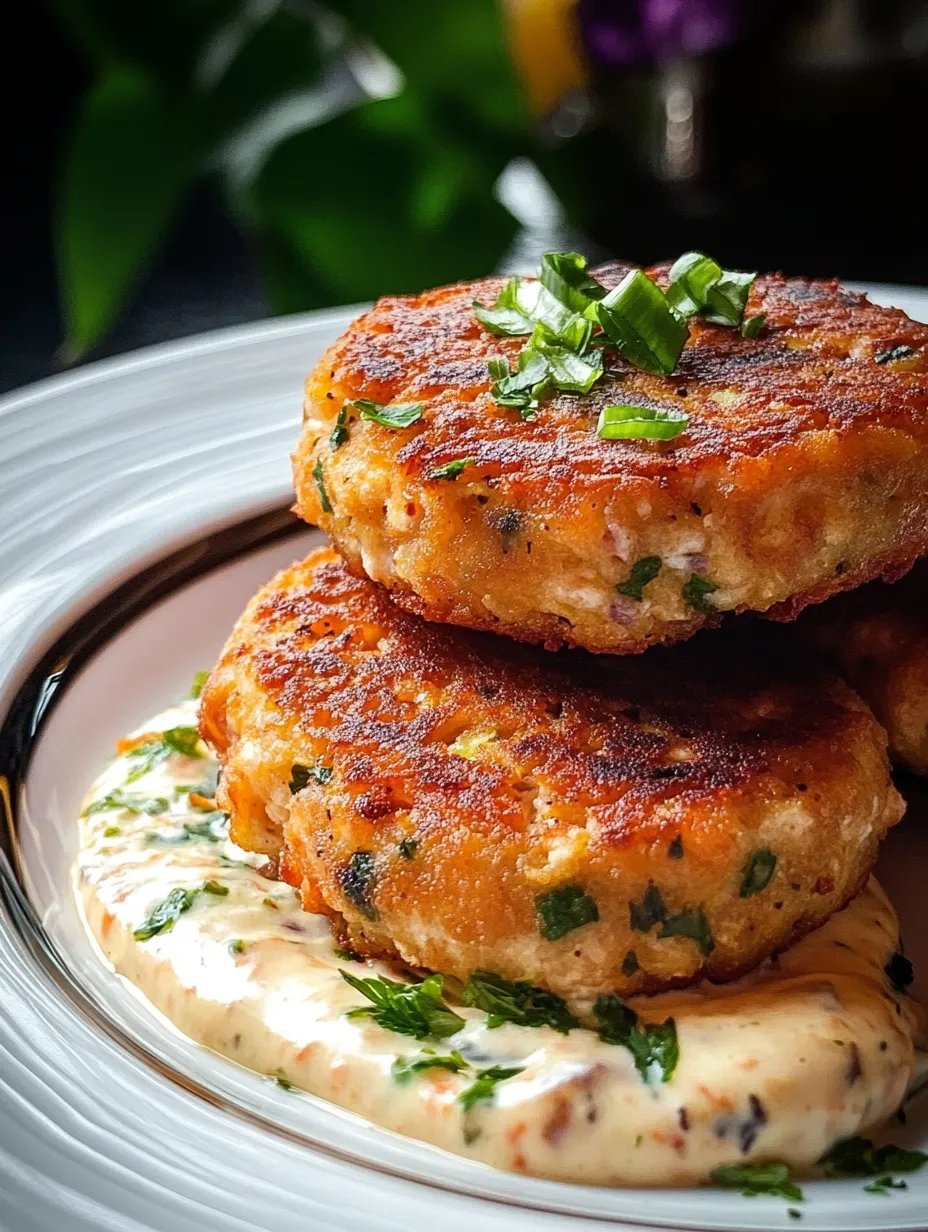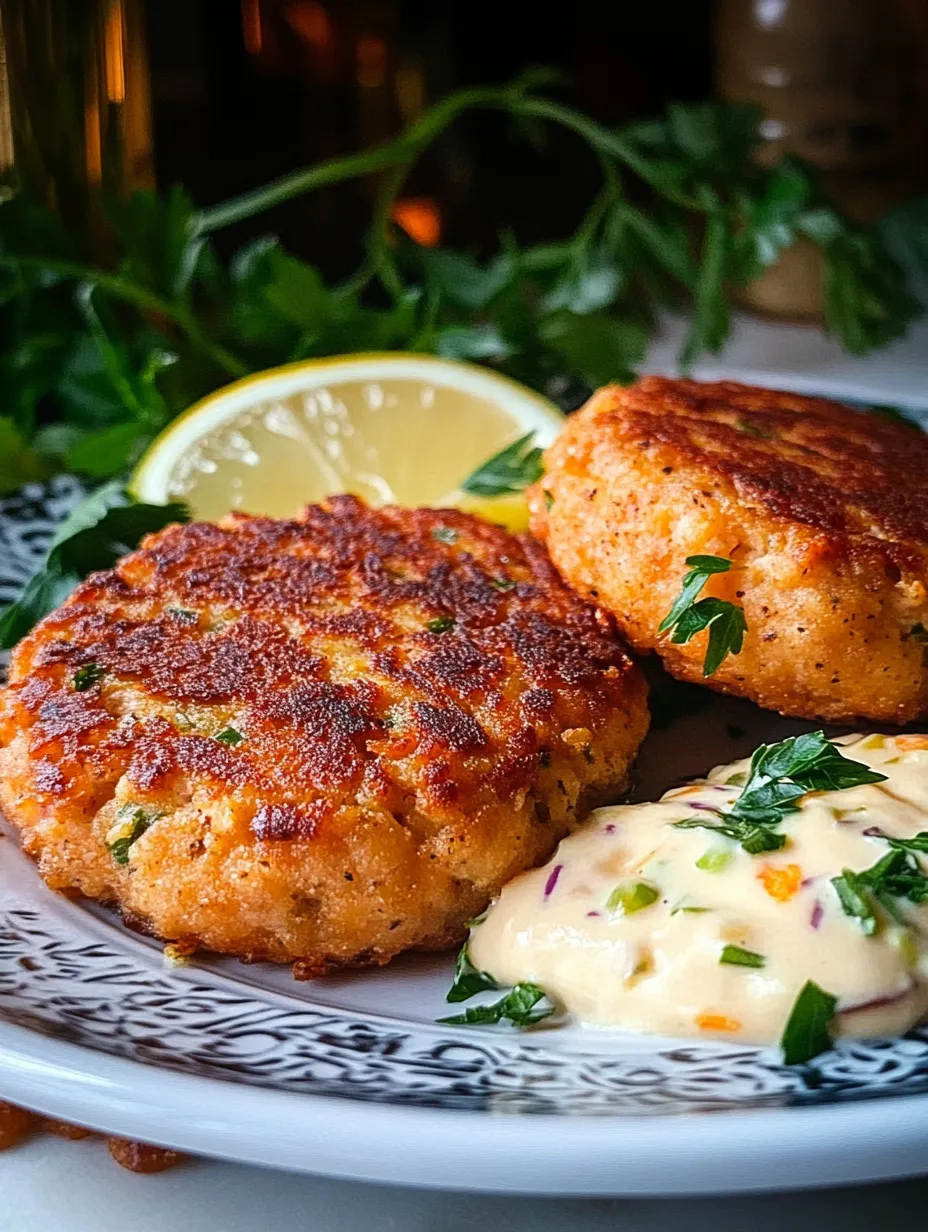 Pin it
Pin it
This hearty salmon cake recipe transforms leftover salmon into a mouthwatering appetizer that balances both flavor and texture. The crispy exterior gives way to a tender, flavorful interior packed with aromatics and fresh herbs for a classic dish that never disappoints.
I first made these salmon cakes when looking for creative ways to use leftover grilled salmon, and they've since become a family favorite that my kids request weekly alongside a simple green salad.
Ingredients
- Salmon: 1 pound fresh is best for maximum flavor, but canned works in a pinch
- Olive oil: Creates the perfect crispy exterior without heaviness
- Garlic powder: 1 teaspoon adds depth without overpowering the delicate salmon
- Black pepper: Freshly ground provides the best flavor
- Salt: 1 teaspoon, kosher salt is preferred for better flavor distribution
- Butter: 3 tablespoons adds richness and helps create the perfect golden crust
- Plain panko crumbs: 1 cup creates the ideal light and crispy texture
- Red onion: 1 cup adds a slight sweetness and essential aromatics
- Red bell pepper: ⅓ cup adds color, sweetness and slight crunch
- Yellow bell pepper: ⅓ cup provides visual appeal and mild flavor
- Eggs: 2 lightly beaten serve as the crucial binder for perfect cakes
- Mayonnaise: 2 tablespoons adds richness and helps with binding
- Sour cream: 1 tablespoon creates moisture and tanginess
- Fresh dill: 1 tablespoon, the perfect herb complement to salmon
- Parsley: 2 tablespoons adds brightness and fresh flavor
- Lemon juice: 1 tablespoon, the acidity balances the richness
- Paprika: ½ teaspoon optional but adds color and subtle smokiness
- Worcestershire sauce: 1 teaspoon provides umami depth and complexity
Step-by-Step Instructions
- Prepare the Salmon:
- Preheat oven to 425°F. Clean salmon thoroughly with lemon and warm water, then pat completely dry with paper towels. Season with salt, pepper, and garlic powder. Bake for exactly 10-15 minutes until just cooked through but still moist. Immediately flake the salmon while warm and set aside to cool slightly.
- Sauté the Aromatics:
- In a medium skillet, heat olive oil and butter until shimmering. Add the diced onions and bell peppers, sautéing for 7 minutes until softened but still maintaining some texture. The slight caramelization enhances the overall flavor profile of the salmon cakes.
- Mix the Cake Mixture:
- In a large mixing bowl, combine the flaked salmon, panko crumbs, sautéed vegetables, beaten eggs, fresh herbs, lemon juice, Worcestershire sauce, mayo, sour cream, paprika, salt and pepper. Mix gently but thoroughly until everything is well incorporated, being careful not to overmix which can make the cakes dense.
- Form the Patties:
- Using approximately ⅓ cup of mixture for each, form 10-12 uniform patties with your hands. Press firmly enough to help them hold their shape but avoid compacting them too tightly. The ideal thickness is about ¾ inch for proper cooking.
- Pan Fry to Perfection:
- Heat olive oil and butter in a large skillet over medium heat until shimmering but not smoking. Place patties in the pan without overcrowding, cooking for exactly 4 minutes per side until achieving a beautiful golden brown crust. The interior should be hot throughout but still moist.
 Pin it
Pin it
The fresh dill is truly the star ingredient in these salmon cakes. I discovered this after trying various herbs, and nothing compares to how dill enhances the salmon's natural flavor. My grandmother always said a salmon cake without dill is like bread without butter, and after years of making this recipe, I couldn't agree more.
Make-Ahead Options
These salmon cakes can be prepared up to the forming stage and refrigerated for up to 24 hours before cooking. Simply cover the uncooked patties tightly with plastic wrap, placing parchment paper between layers to prevent sticking. When ready to cook, allow them to sit at room temperature for 15 minutes before frying for the most even cooking results.
Serving Suggestions
Serve these salmon cakes with a simple lemon-dill aioli by mixing mayonnaise, fresh lemon juice, minced dill, and a touch of garlic. For a complete meal, pair with a crisp green salad dressed with a light vinaigrette or roasted vegetables. They also make excellent sandwich fillings on brioche buns with arugula and sliced avocado for a gourmet lunch option.
Substitution Guide
For a low-carb or keto version, sweet potatoes can replace the panko breadcrumbs as indicated in the recipe. Canned salmon works perfectly when fresh isn't available just be sure to drain well and remove any skin or bones. The bell peppers can be substituted with celery, corn, or even finely chopped zucchini depending on what you have available, maintaining the same volume for proper moisture balance.
Storage Tips
Cooked salmon cakes will keep in an airtight container in the refrigerator for up to 3 days. For longer storage, freeze cooked and cooled cakes by placing them on a parchment-lined baking sheet until solid, then transfer to a freezer bag with parchment between layers. They can be frozen for up to 2 months. Reheat from frozen in a 350°F oven for 15 minutes or until heated through.
 Pin it
Pin it
Frequently Asked Questions
- → Can I use canned salmon for this dish?
Yes, canned salmon works perfectly for this dish. Just ensure you drain it well and remove any bones or skin before mixing.
- → What’s the best substitute for panko crumbs?
If you're looking for a low-carb option, you can use mashed sweet potatoes as a binder, or try almond flour for a keto-friendly alternative.
- → How can I store leftover salmon cakes?
Store leftover salmon cakes in an airtight container in the refrigerator for up to 3 days. Reheat gently in a skillet or oven for best results.
- → Can I bake these instead of frying?
Yes, you can bake the salmon cakes at 400°F (200°C) on a parchment-lined baking sheet for about 12-15 minutes, flipping halfway through for even cooking.
- → What can I serve with salmon cakes?
Salmon cakes pair well with a light salad, steamed vegetables, or a dipping sauce like tartar sauce or garlic aioli.
- → How do I keep the patties from falling apart?
Ensure the mixture is properly combined and not too dry. Adding an extra egg or a bit of mayo can help bind the ingredients together.
